Despite Arizona’s reputation as a mostly desert state, there are plenty of stunning lakes to discover and enjoy. Camping is one of the finest ways to appreciate these natural treasures while spending time outside, whether you’re in a tent or a trailer/camper of some sort.
As I’ve become older, I’ve come to prefer sleeping on a cot or bed when camping rather than “roughing it” in a tent on the ground. Fortunately, there are plenty of locations where you can set up camp right out of your car.
Discover the top lakeside camping locations in Arizona with this article, and get ready to take in the breathtaking scenery of the state.
With over 128 lakes, there’s no shortage of options for car camping, RV camping, or backpacking. Explore reservoirs, man-made lakes, and the only two natural lakes in Arizona, including the famous Lake Powell and Lake Mead. With activities like fishing, kayaking, and paddleboarding, camping near the water brings endless fun.
Read ahead to find the perfect lakeside camping trip for you, whether you want to car camp, lakes with RV camping, or backpack some distance for solitude.
Here are Top 7 Lakeside Camping in Arizona’s
1. Lake Powell

Due to its enormous size, Lake Powell offers dozens of campsites, so there is plenty of room for everyone to enjoy its stunning slot canyons and red granite cliffs. In Arizona, a lot of families decide to camp out on the sandy beaches for a few weeks throughout the summer.
Houseboats are a common form of camping on Lake Powell, giving large parties access to some of the more secluded campgrounds and canyons that are only reachable by boat. Nonetheless, Lone Rock Campground, which is situated directly on the Arizona–Utah border, is one of my favourite and most frequented campsites along the Lake Powell shore.
There are miles of soft sand beaches in the Lone Rock area, making it a popular destination for large camping parties. You’ll need to drive a little after the pavement stops to reach your desired location, so you’ll need all-wheel-drive cars that can manage thick sand. The large body of open water that makes Lone Rock Campground so appealing is ideal for boating, water skiing, and jet skiing.
2. Lake Mead

One of the biggest reservoirs in the country, Lake Mead is mostly located along the Nevada–Arizona border. One of the more well-liked and stunning campgrounds on the Arizona side is Willow Beach Campground, which draws both tent and RV campers.
Though it is theoretically larger than Lake Powell due to the construction of multiple dams, Lake Mead is actually the Colorado River. Lake Mead is huge and exciting to explore since it has sandy beaches and secret coves that are only reachable by boat or other watercraft! You may reach all of Lake Mead’s mysteries by launching from Willow Beach Campground.
Willow Beach boasts a grill, marina, camp store, 28 full-service RV hookup sites, some tent camping sites, a 24-hour shower and laundry building, and even WiFi! Cell service is scarce in this part of the desert, so WiFi comes in handy for emergencies. You could easily spend an entire week here (or up to 6 months in an RV!) and not need to head back into the city for supplies or entertainment.
3. Bear Canyon Lake
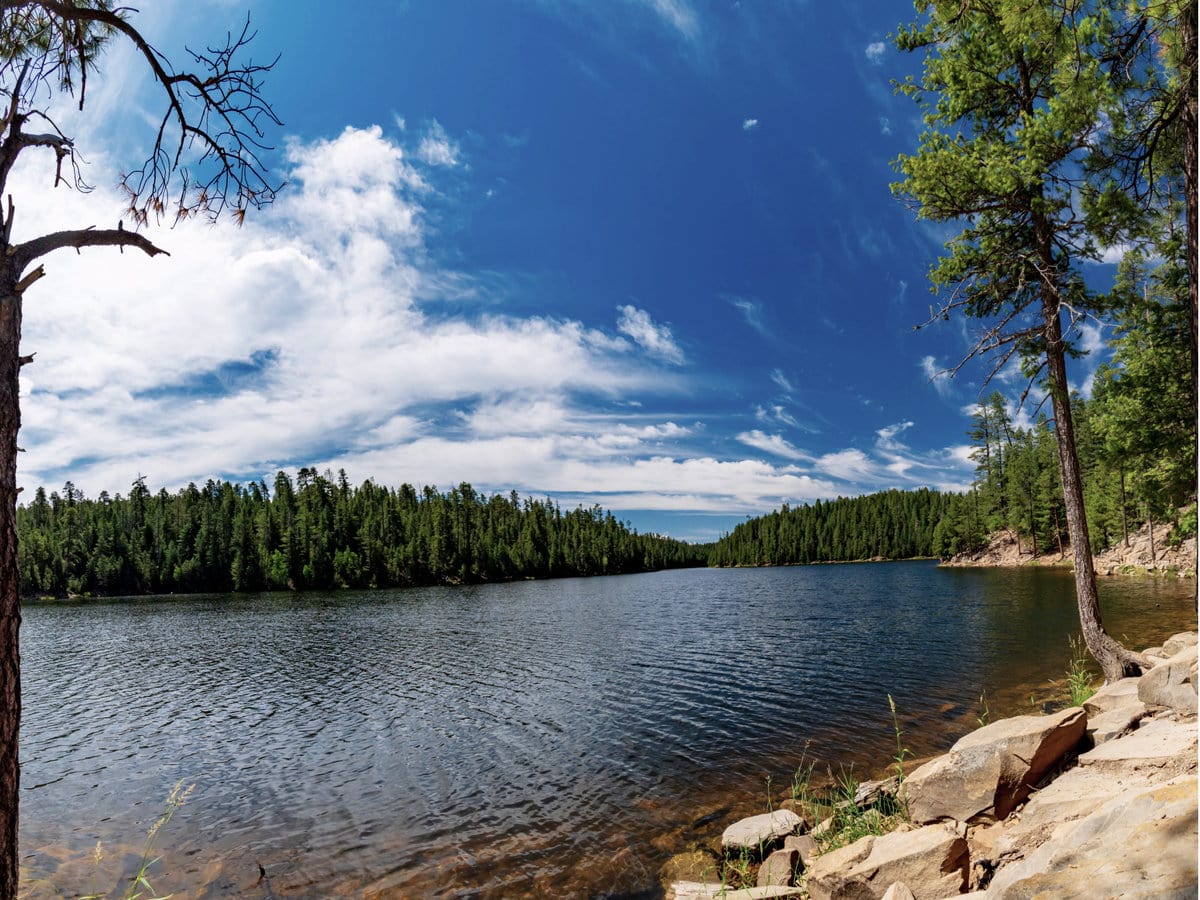
Go to the Mogollon Rim past Payson if you’re seeking for a lake camping experience a little more “roughing it.” There are several reservoirs around the edge of the Rim, but Bear Canyon Lake is my personal favourite because of its accessibility and beauty.
The campsites are underdeveloped and just open dirt places among the tall pine trees; there are no showers, camp hosts, or numbered campsites here. It’s first come, first served. There are no further conveniences, just crude toilets that are, in my experience, rather filthy and not well maintained.
This is my favourite kind of camping since it’s so convenient to pull up to your favourite location and set up camp right next to your car. This is the appeal of camping this way. The camping areas are all located above the lake; however, there is a short, rough hiking track (less than 0.5 mile) that leads down into the canyon to visit Bear Canyon Lake.
The actual Bear Canyon Lake is breathtaking! Nestled within an elongated, narrow canyon, the lake is approximately 50 feet deep and is regularly fed all year round with trout, making it a favourite fishing spot. You can fish from the coast or from a human-powered boat, such as a kayak or canoe (motorboats not permitted).
The south end of Bear Canyon Lake, where there are more campgrounds, is where I’ve always spent my time. To preserve the water source, camping is not permitted right near to the lake, but I still like to put up my hammock amid the trees that border the lake for a peaceful afternoon!
4. Saguaro Lake
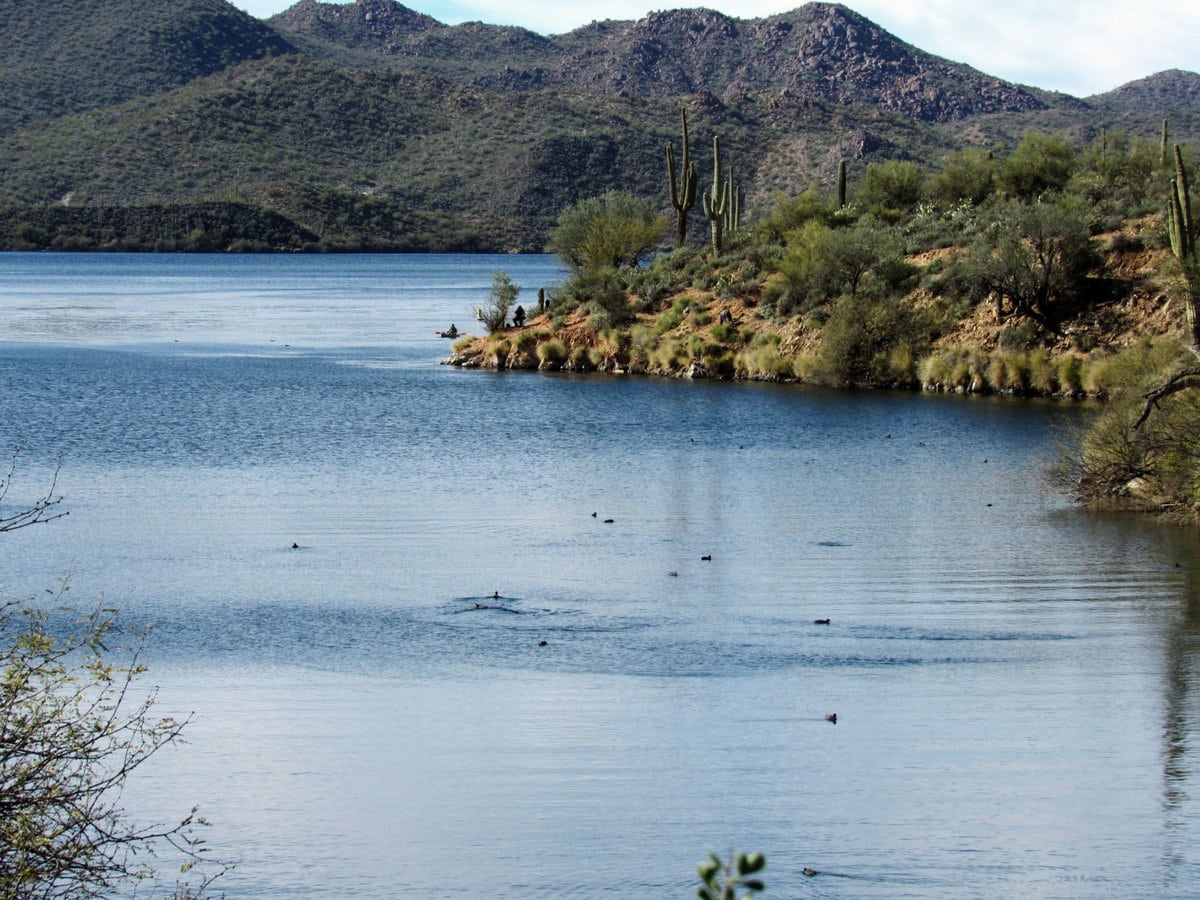
Saguaro Lake, a local favourite for wakeboarding, water skiing, and all other water sports, lies just a few miles east of Mesa. Saguaro Lake, called after the tall cacti that line its edges, is tucked away inside walls of desert and is one of the more well-liked lakes in the Phoenix Valley because of its close proximity to the suburbs.
Saguaro Lake, one of a series of reservoirs along the Salt River, only offers boat-accessible camping spots at the Bagley Flat Campground and Boat Dock on the eastern shore. Because the lake isn’t very large, the trip won’t take long, but you’ll need to pack up your boat with everything you need for camping. The ten camping spots are first come, first served, and you never know who else might be there until you actually arrive!
If you don’t want to boat camp or don’t have time for an overnight excursion, consider setting up your chairs and awnings at the Butcher Jones Recreational Site, which is car-accessible and situated on the beaches of Saguaro Lake, for a “day camp”-style experience. Though it can get crowded early in the morning, this sandy beach-like area is a summertime favourite and a terrific spot to unwind, play in the water, or go kayaking.
5. Canyon Lake
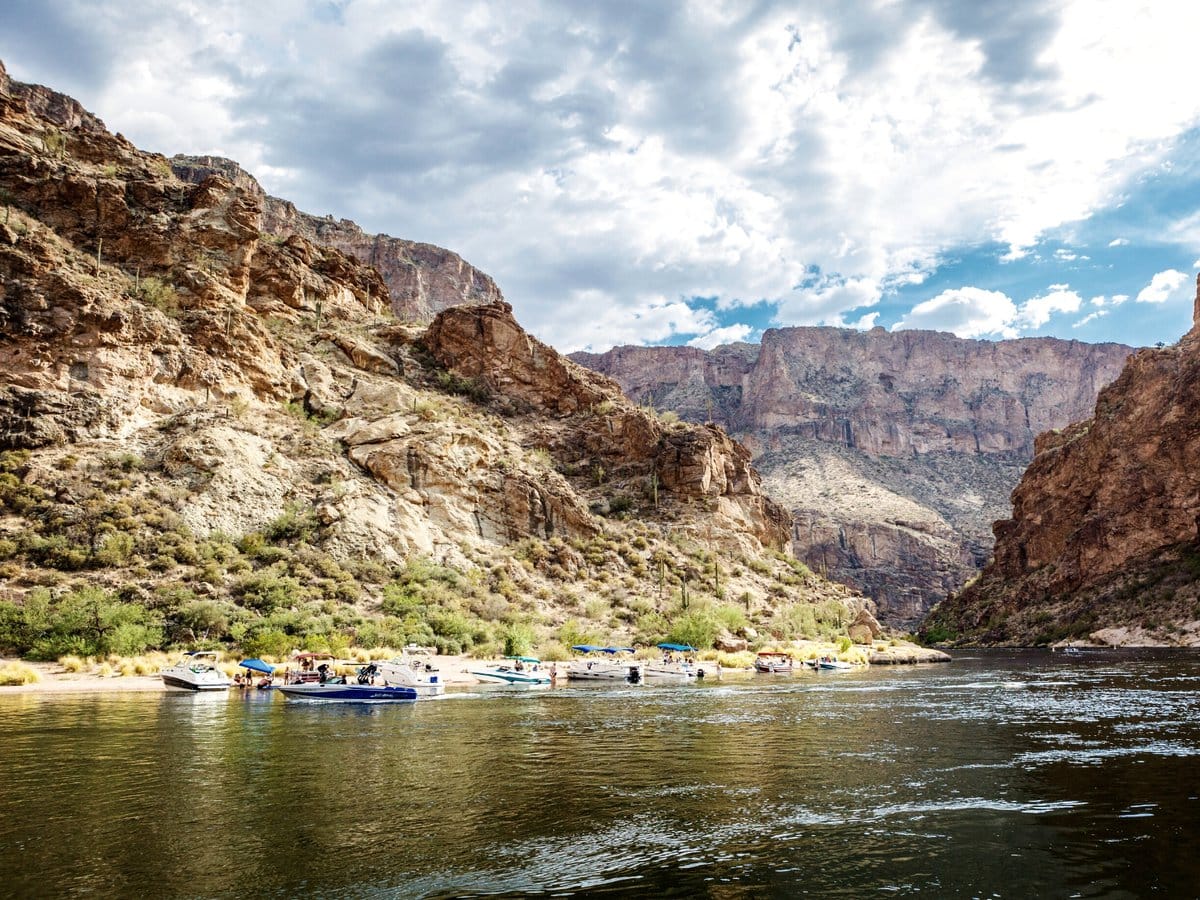
The stunning and towering canyon walls that encircle the majority of Canyon Lake are what give it its name. Canyon Lake is located beyond Saguaro Lake. The lake can grow quite small around its easternmost point, but there are lots of quiet spots to be found, and you can even see some native Bighorn Sheep who live inside the red rock canyon walls.
Canyon Lake offers more convenient camping than Saguaro Lake, in part because of its unusual size, which makes its shoreline more accessible. The sole authorised campsite, which enables campers to park their vehicles or RVs and set up camp close to the lake’s edges, is the Canyon Lake Marina. There is more than enough space for campers all year round with 28 RV sites and 18 tent sites.
If you can locate an open enough coastline, you might be able to boat camp, but it might be difficult to find an area large enough for tent camping due to the high canyon walls! Situated a few miles farther up the canyon, the Point Boat Dock and campground can only be reached by boat and has just three campsites. You may definitely camp at the Marina for the weekend and enjoy being on the lake from dawn to dusk.
6. Patagonia Lake
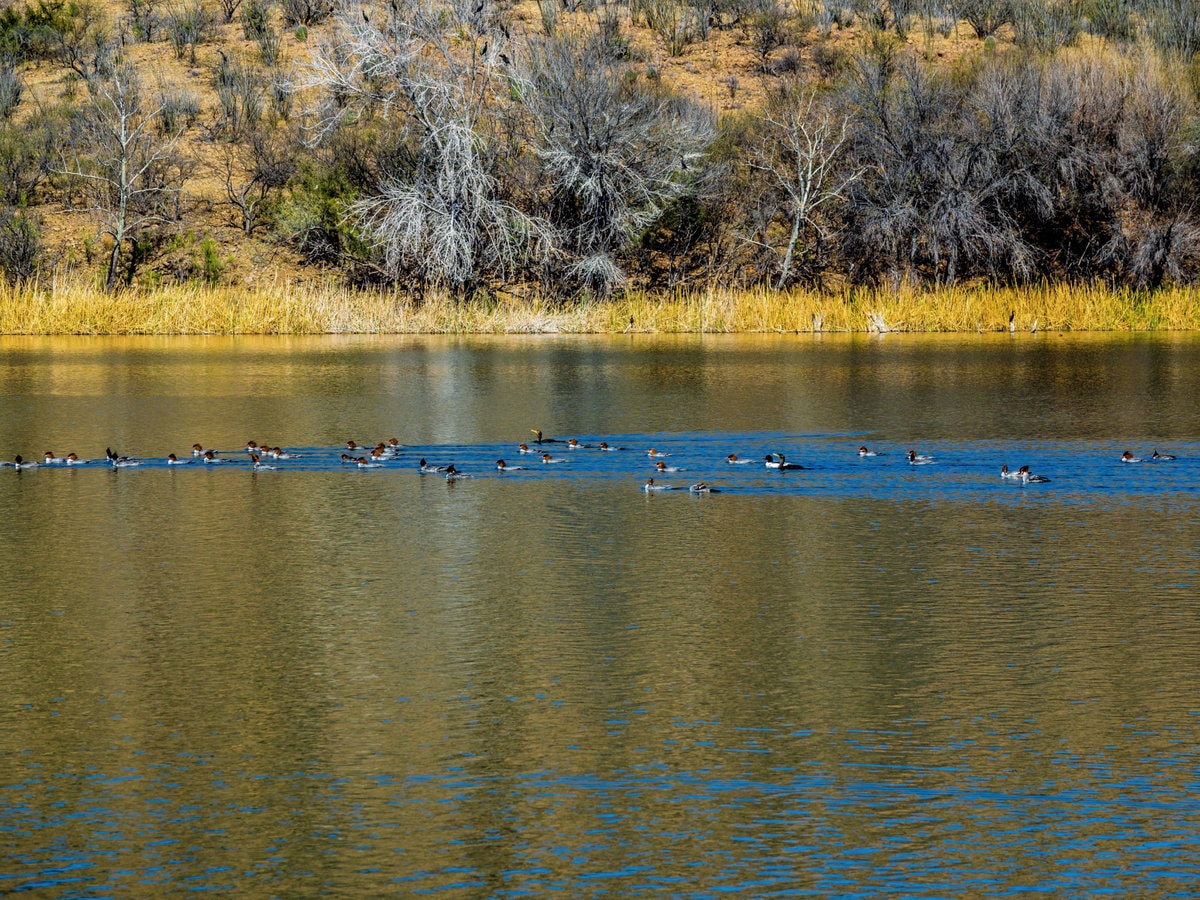
Patagonia Lake is a veritable oasis in southern Arizona. It is bordered by desert on all sides, providing the ideal environment for both migratory birds and native wildlife. Patagonia Lake is a favourite among people who want to experience the great outdoors in southern Arizona, offering miles of hiking paths and plenty of shorelines to explore on foot.
In terms of camping, Patagonia Lake State Park offers a few choices. Seven cottages with uninterrupted views of the lake from your front porch are available for rent near the southeast end of the lake for those who don’t love the notion of “real” camping! Although guests are need to bring their own bedding, every cabin is equipped with mattresses, ceiling fans, an outside picnic table and BBQ pit, and a shower house conveniently located nearby.
Patagonia Lake offers 105 established campsites along its stunning shoreline, perfect for tent camping enthusiasts seeking a more conventional experience. Every site offers space for two cars or one RV, a picnic table, and a fire ring. A ramada with shade is available at several of these campsites, which is ideal for the warmer summer months.
On the other side of Patagonia Lake, there are 12 boat-in campsites that are ideal for those seeking more privacy and a more rugged experience. These can even be reserved in advance! Enjoy the well-known Arizona sunsets while spending your evenings seeing animals such as coatimundis and whitetail deer, who are known to frequent the shoreline. Outdoor pursuits like hiking, boating, fishing, and other outdoor games will keep you occupied for a few days, or even a week.
7. Big Lake
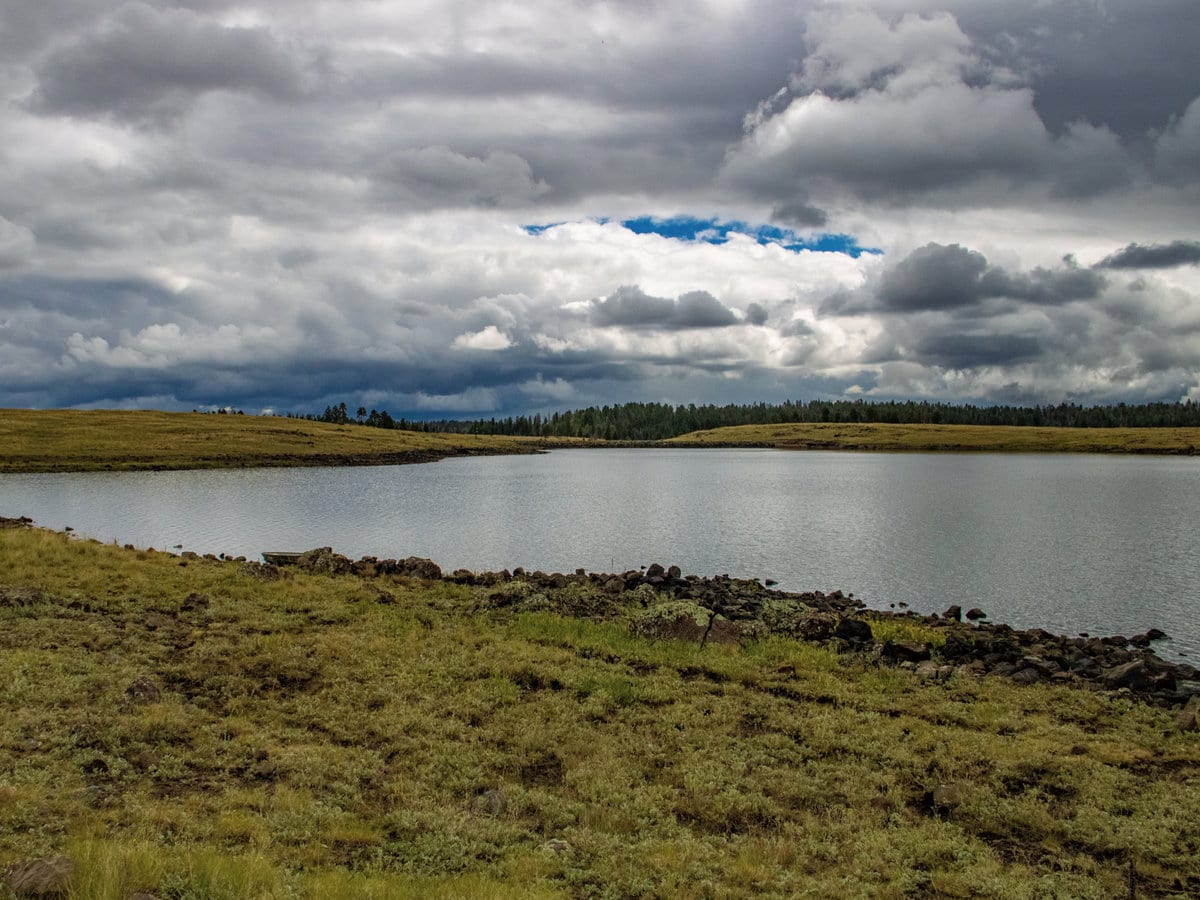
Camping in eastern Arizona’s White Mountains, particularly in the verdant woodlands surrounding Big Lake, holds significant memories for me from my early years. It’s simple to find scattered campsites in this area, but be aware that there are no restrooms or other amenities; this is true camping. Anywhere you can locate a level space suitable for your campground, you are invited to set up a tent or an RV, and most of them have rudimentary fire rings left by past campers.
A small store with cold drinks and popsicles—a family favorite—boat docks, and five distinct campgrounds with flat terrain, RV parking/sites, tent sites, fire rings, and convenient access to the lake are located closer to Big Lake.
With a surface area of 575 acres, Big Lake is well named given its ample space for fishing from both its shores and your boat. One of the greatest places to go hiking, hunting, four-wheeling, and just to be outside and take in Arizona’s natural beauty is this part of the White Mountains. Visit the tourist centre or enrol in one of the naturalist programmes to learn more about the area.
FAQ’S:
Q1: How do I make reservations for lakeside camping in Arizona?
Reservations can be made online through the Arizona State Parks website or the specific website of the campground or lake you plan to visit. Some locations also offer walk-in campsites on a first-come, first-served basis.
Q2: What should I do in case of an emergency at a lakeside campground?
In case of an emergency, call 911 immediately. Be familiar with the location of the nearest park ranger station or campground office for assistance. Additionally, it's advisable to have a first aid kit and emergency contacts readily available.